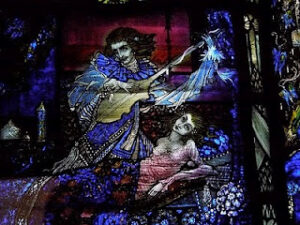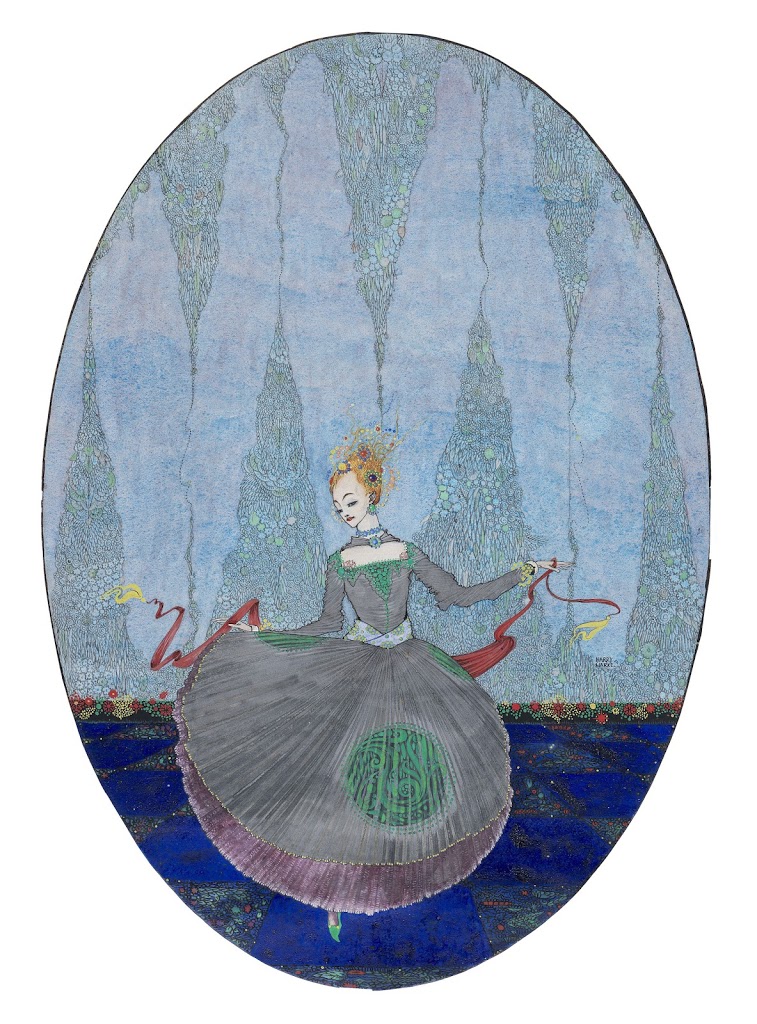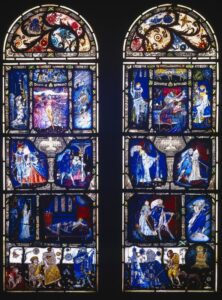One of Champlain College Dublin’s Core course options is Art 220, Cultural Immersion through the Fine Arts. This class is taught by Jacinta Kendrick and the way she approaches art is in a very fun, hands-on way. Many of the art classes I have taken have ended up being an art history course, which is important, but is harder to learn. Instead, Kendrick does fun projects where the students learn and see art in real-life, but they are also getting out and about in Dublin. So far the class has gone to the Hugh Lane Gallery, the National Gallery, on an architectural walk of the city, and the National Archaeology Museum. One week, we stayed inside the Academic Center and watched and discussed Irish films, including a short film shot by her husband, Richard Kendrick called Crossing Salween. We also watched The Commitments, Deep Sea Dance, and Dancing on the Box. Last week we started a linograph project. Last week we were told to bring in some of our favorite images in hopes that we would find one we would like to turn into a print. Many of the students had done similar projects with an easier medium of rubber, making rubber stamps, but linography is used with linoleum. We had to trace our image onto tracing paper, flip it and transpose it to the linoleum. When this is done, the fun part begins: carving. The next few classes will be devoted to carving and printing our images for keepsakes to bring home.

Going beyond where and what we’ve done in class, thanks to Art 220 I’ve found a new Irish artist that I have fallen in love with: Harry Clarke. Harry Clarke is a famous stain-glass maker, and an illustrator for Hans Christian Anderson and Edgar Allen Poe. My first encounter with Harry Clarke was at the Hugh Lane Gallery where I saw his ten-paneled piece The Eve of St. Agnes, based off the poem by John Keats. Clarke was revolutionary with his work of moulding the lead into the piece, incorporating it into flowers and ferns. Clarke used a process called “flashed glass,” to get his deep reds and blues. A thin layer of each was poured onto the glass, and through the use of acid the colors were burned away to get those rich colors. I was particularly drawn to the royal blues and maroons that are depicted in the image on the right. The colors give the window a calming, dreamlike tone that reminds me of fairy tales.

At the National Gallery, there currently is an exhibition entitled Fables and Fairy Tales, where Harry Clarke’s illustrations were being shown. The blue that I was in love with in his stained glass, was present in his water color illustration of The Little Sea Maid. Clarke’s piece was made in 1915 and part of the reason why I love it is because I grew up with Andersen’s story and Disney’s adaptation. I’ve read the short, seen the movies, and the ballet and this single image portrays much of my childhood, evoking a personal response. Andersen’s original story is very dark, where Ursula is a black panther instead of the octopus my generation is used to, and in the end, she dies. With this in mind, the illustration has a somber tone, with the positioning of the ballerina’s body. She’s looking down as if accepting her fate, and with her arms open she’s doing it out of love instead of cringing from death. A viewer can see this as the maiden’s final dance, her lamentation. The illustration is small and displays a small maiden, portrayed as a ballerina, dancing on a sea of water, with her dress looking like a sea shell. Clarke paid particular attention to detail in the wavy, light blue curtains of the stage, making it look like the sparkly ocean with an almost pointillism technique. A final place to see Clarke wonderful work is in one of my favorite locations in the city: Bewley’s Café.
Bewley’s is located on Grafton Street and has some of the best tiramisu and Bailey’s cheesecakes I’ve ever had. Clarke’s work is displayed in the back of the building. The whole back wall has five or six panels of Clarke’s stained glass work. So even if you’re not one for galleries, stroll down to Bewley’s after class and treat yourself to dessert and some beautiful artwork.

Abbie Clark – Champlain College class of 2013